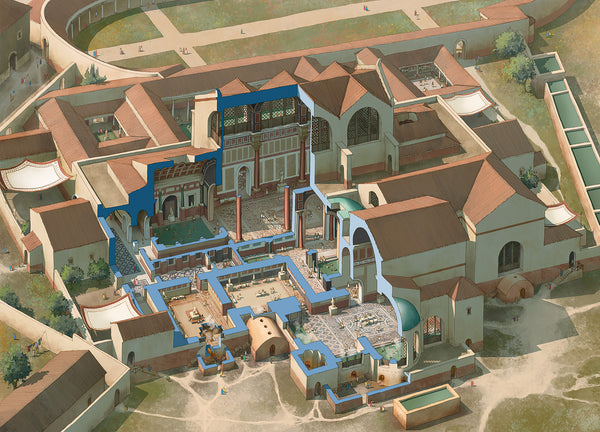Before the Pyramids

Some time ago, I was in Beirut and visited the archaeological museum of the American University: a carefully chosen, lovely selection of objects that represent all major cultures of the ancient Near East. It was over there that I suddenly realized that I liked the reddish Naqada ware, which was made in Upper Egypt in the fourth millennium.
It’s not just an age in which they made intriguing pottery: it’s the age in which the people living along the Nile started to cooperate. Trade began. The first ships were built and soon became status symbols: the owner of Tomb 100 in Hierakonpolis asked someone to paint boats on the tomb’s walls. In the same city, archaeologists have found mummies with the funeral funeral masks.
The first kings started to rule and they found a way to represent themselves: as executioners. Shown for the first time on the Narmer Palette, this remained a common theme in Egyptian art for centuries and centuries. Even the Roman emperor Trajan is shown, on the walls of the temple of Esna, with a club in his hand, ready to kill a group of captives.
Back to the early days. Two large political units came into being: Hierakonpolis and Naqada. The myth about the struggle between Horus and Seth can be read as a story about these two early kingdoms, and it is quite possible that the idea, common in later stages of Egyptian history, that Egypt came into being when Upper and Lower Egypt were united, in fact resembles some kind of unification of Hierakonpolis and Naqada.
And of course, people started to write, beautiful hieroglyphs. The writers had a story to tell: the first Pyramid texts are the written renderings of an oral literature that dates back to the age before the pyramids.
Talking about pyramids: the first one was the step pyramid of Djoser in Saqqara – but what a strange monument it was! Until then, people had always been able to see the horizon. Now, there was something pointing to the sky: an artificial mountain. For the first time, a monument dominated the landscape. Djoser’s pyramid, built in about 2670 BC, was the climax of a process that had started thousand years before, when the first merchants had began sailing up and down the Nile.
It’s a fascinating story. And it will be the theme of the fourth issue of Ancient History Magazine. After issues on ancient explorers (October), on the reign of Caracalla (December), and on the Attalids of Pergamon (February – you can still contribute), we will tell you everything about “Egypt before the pyramids”. Josho and I are really enthusiastic.

